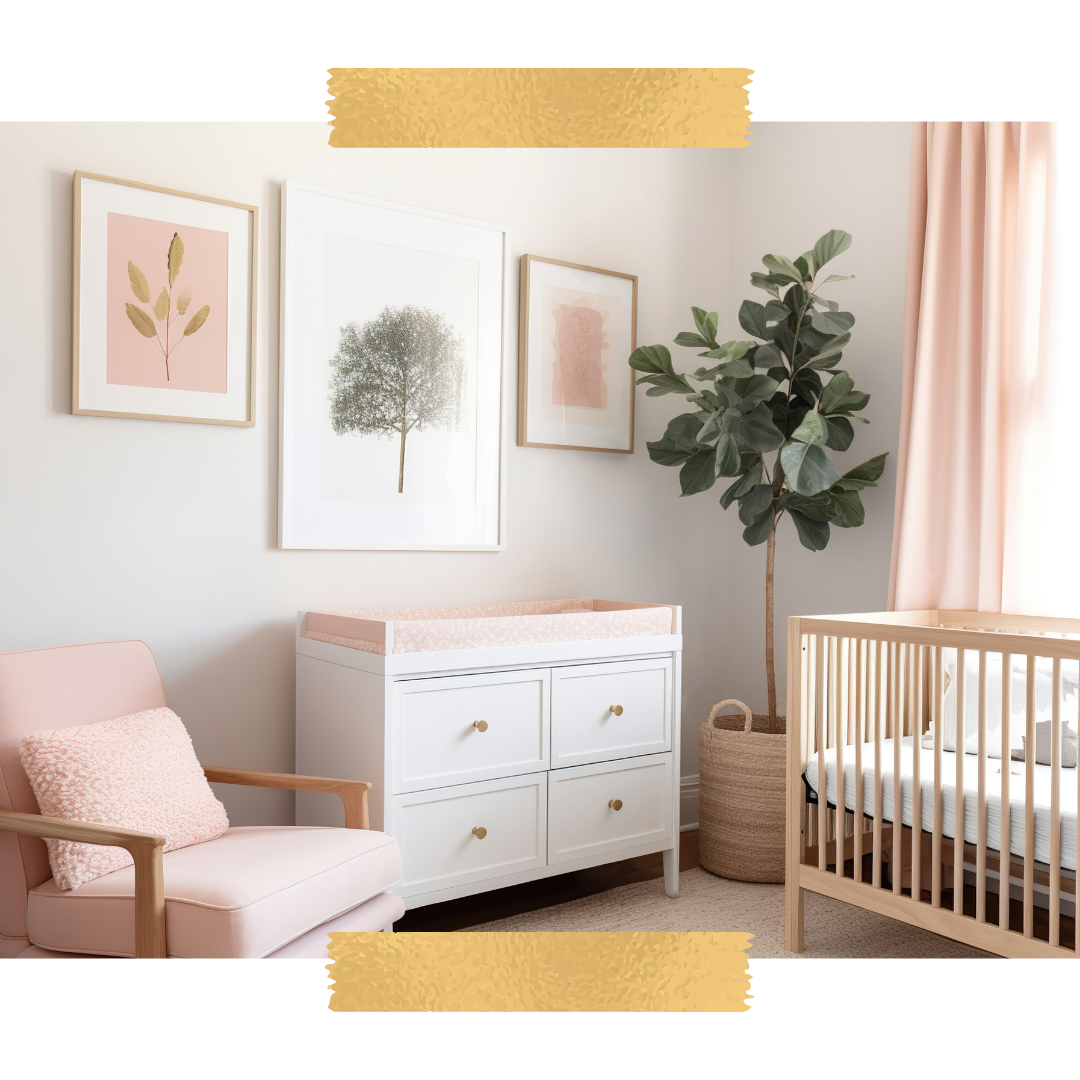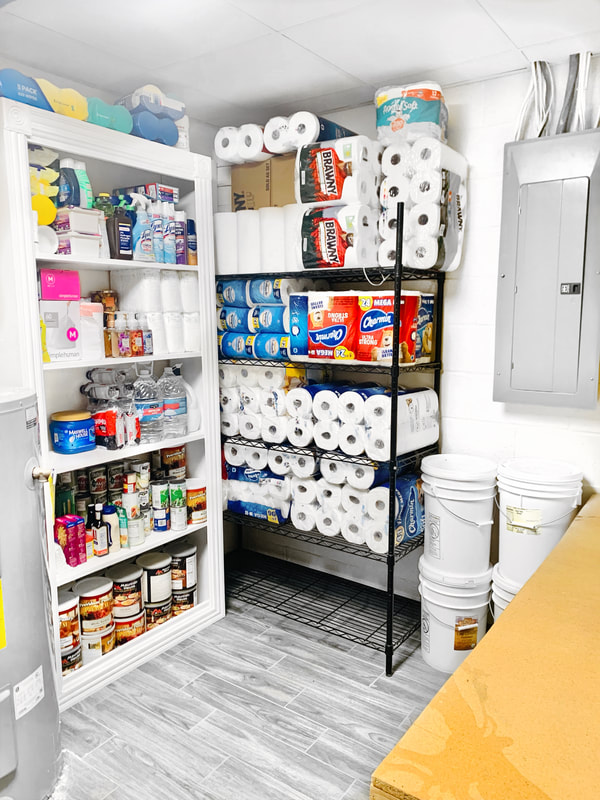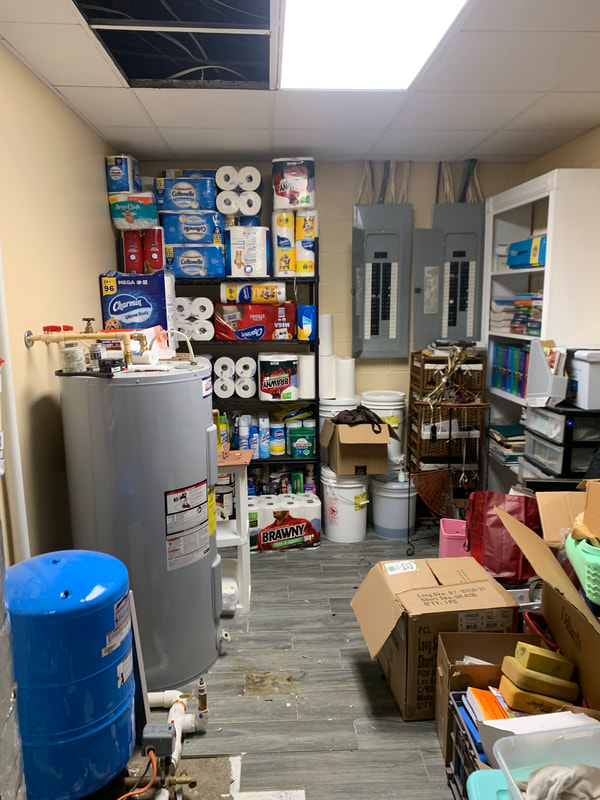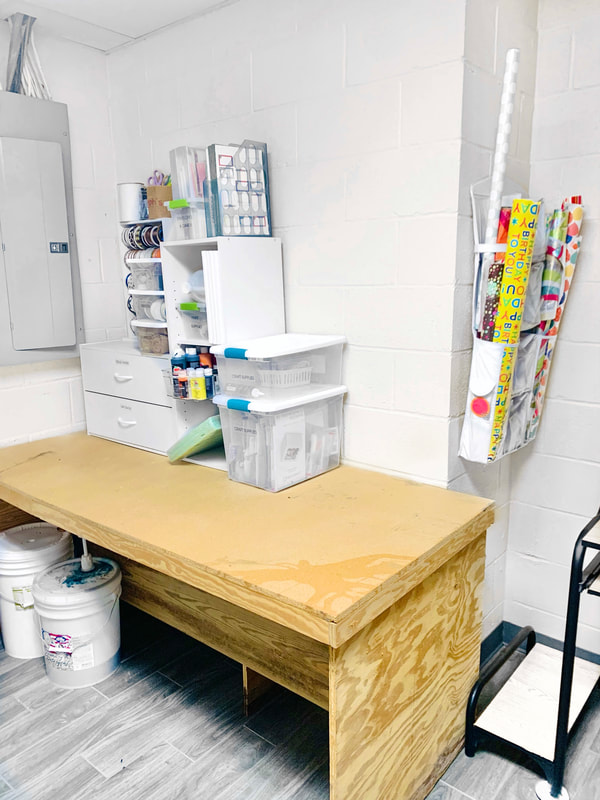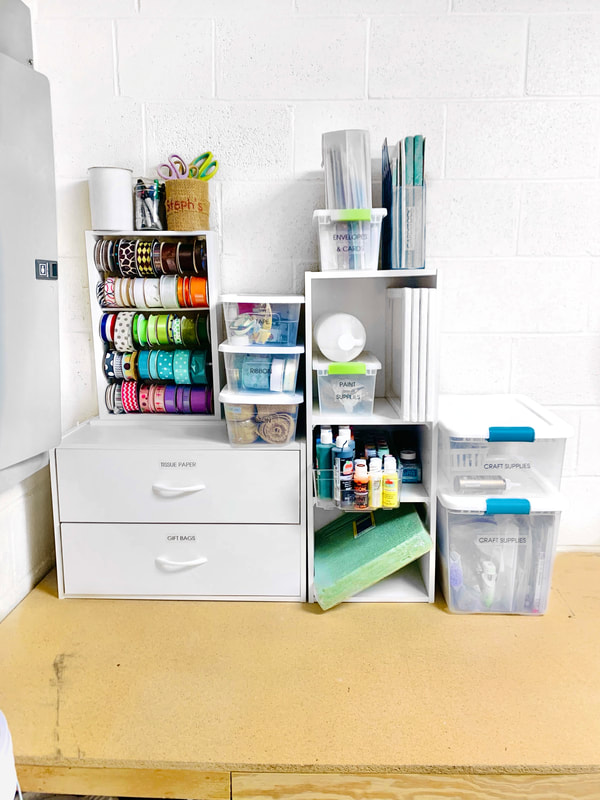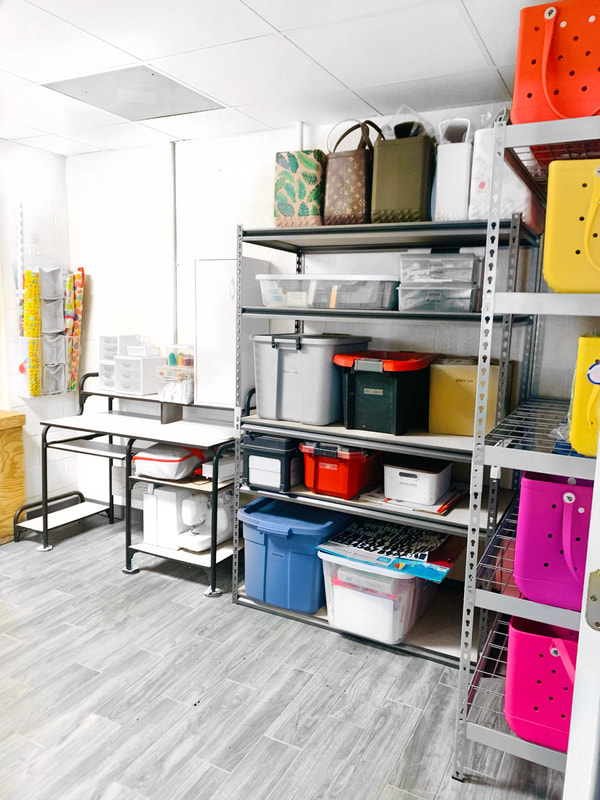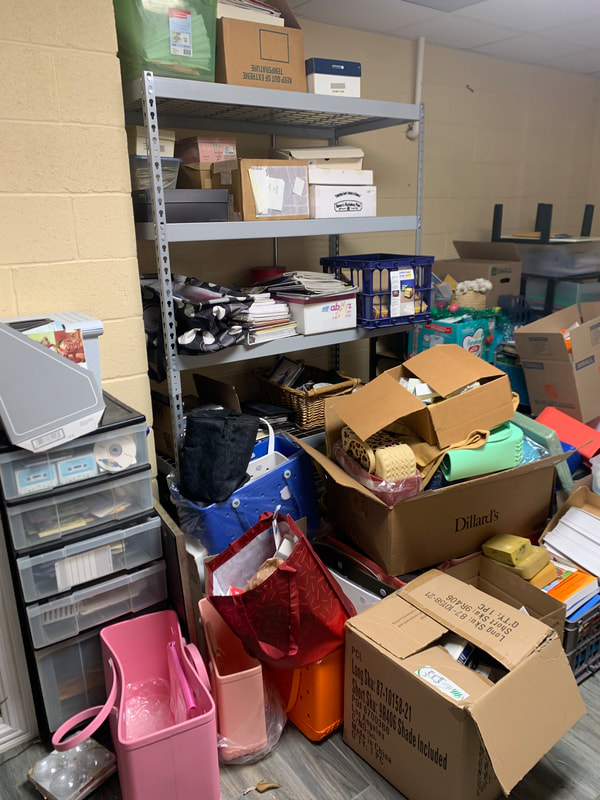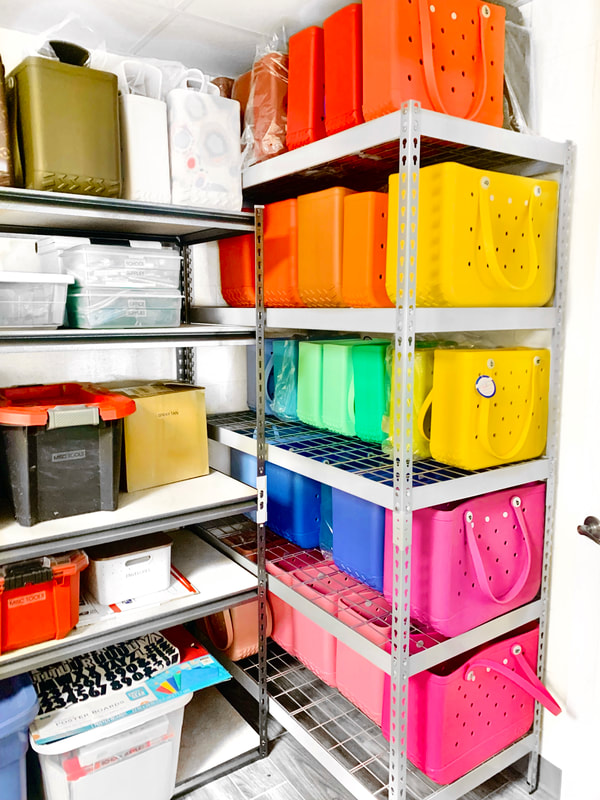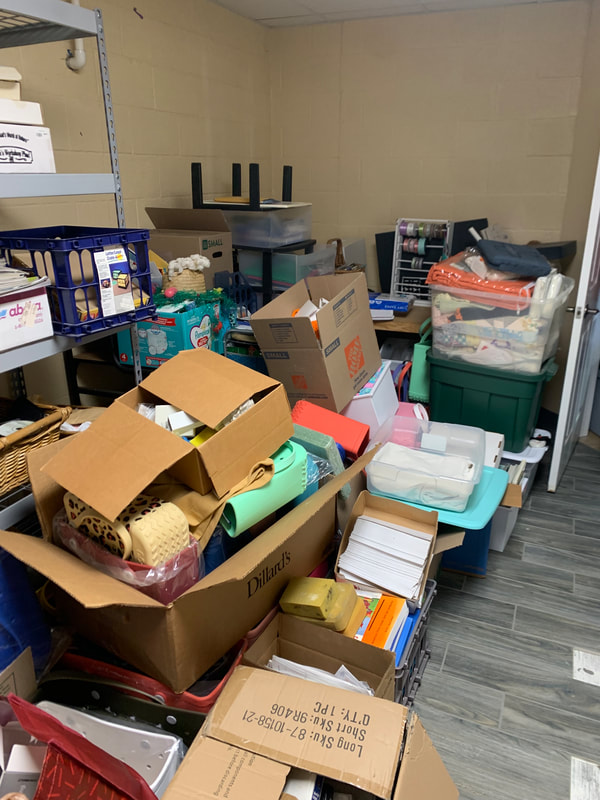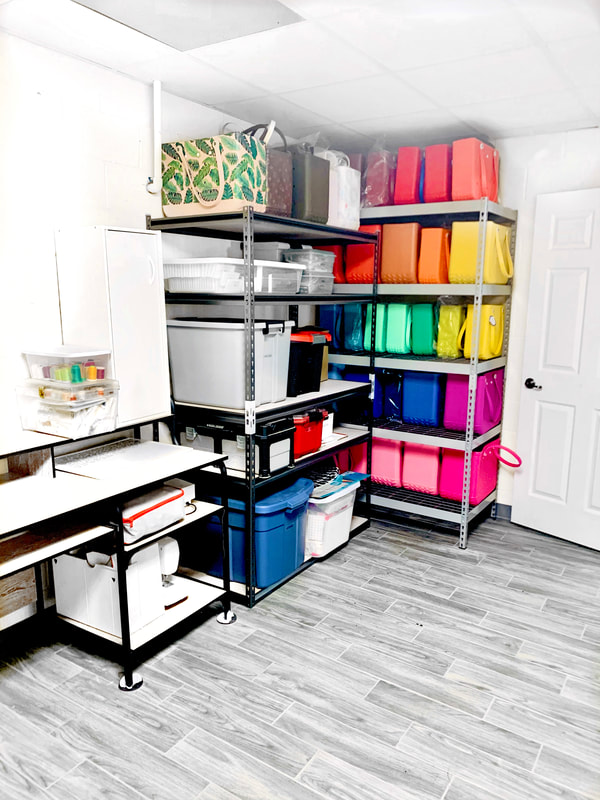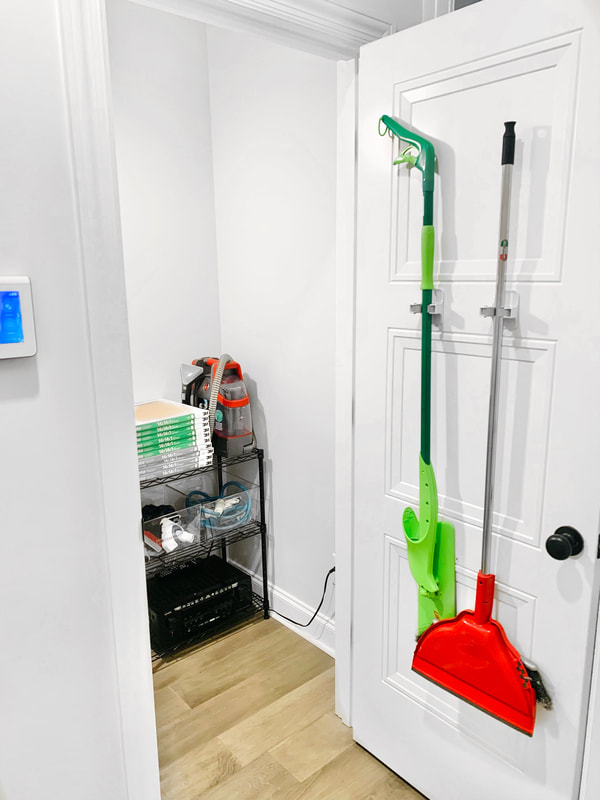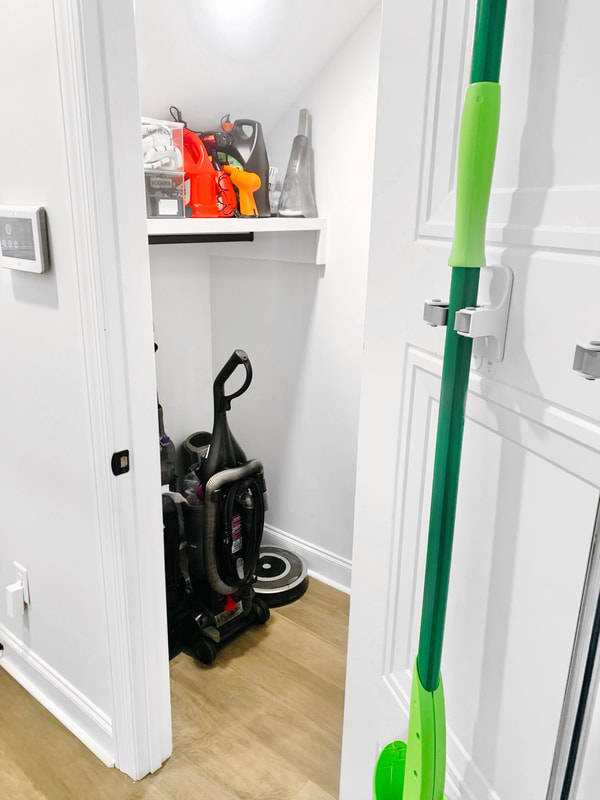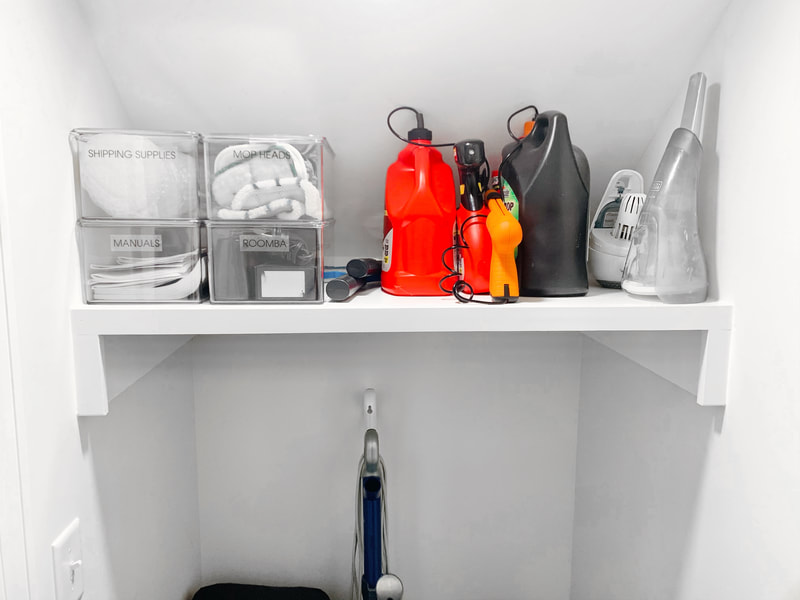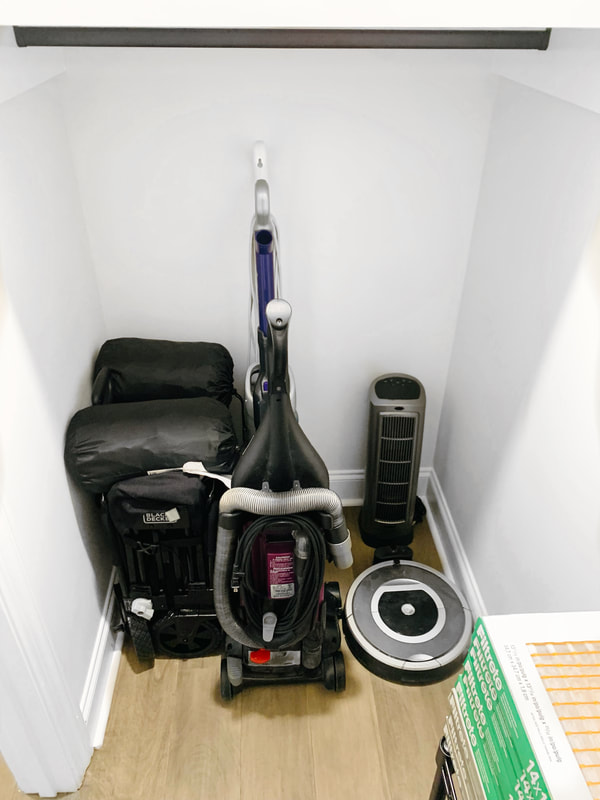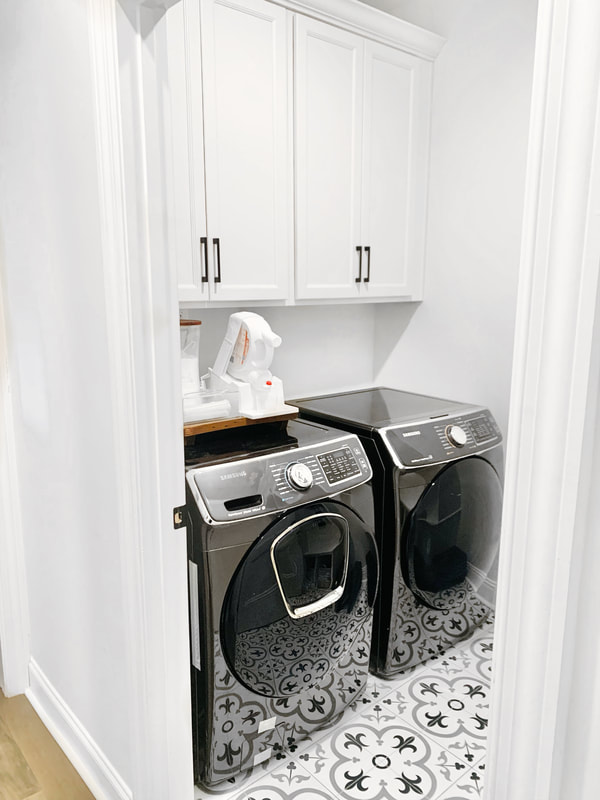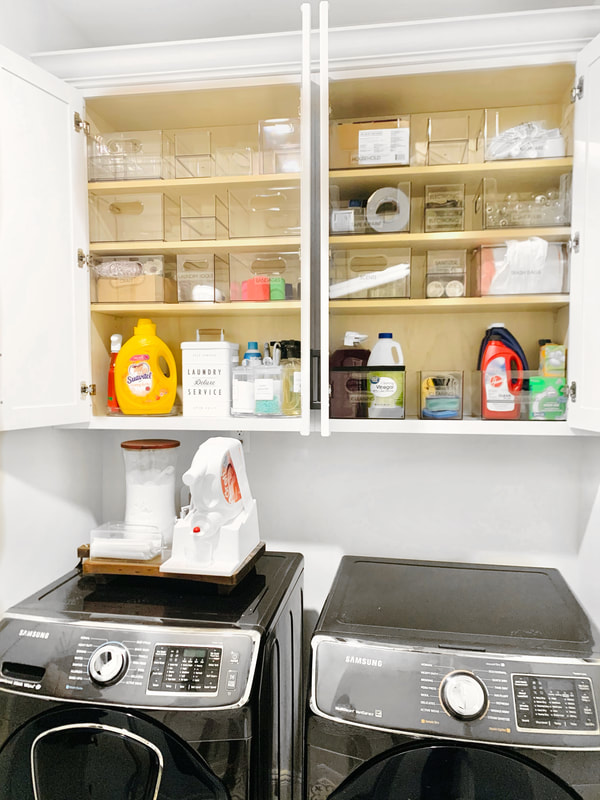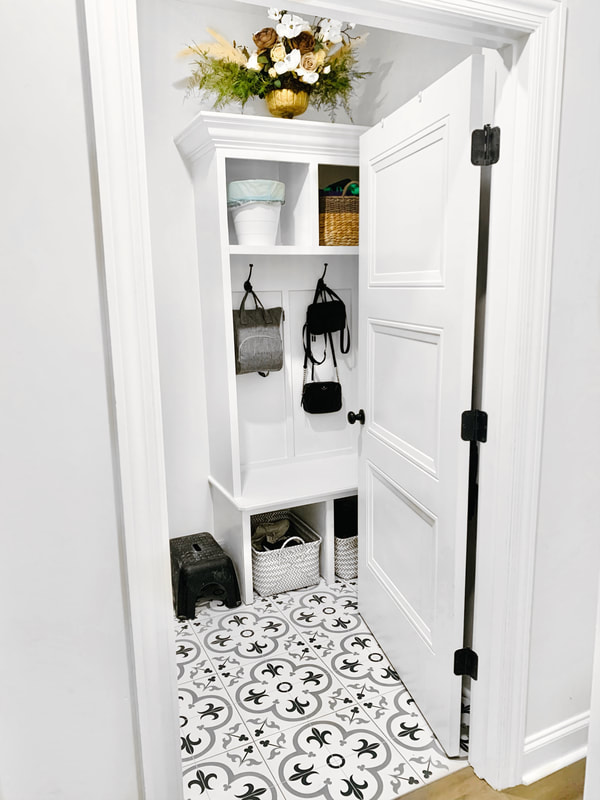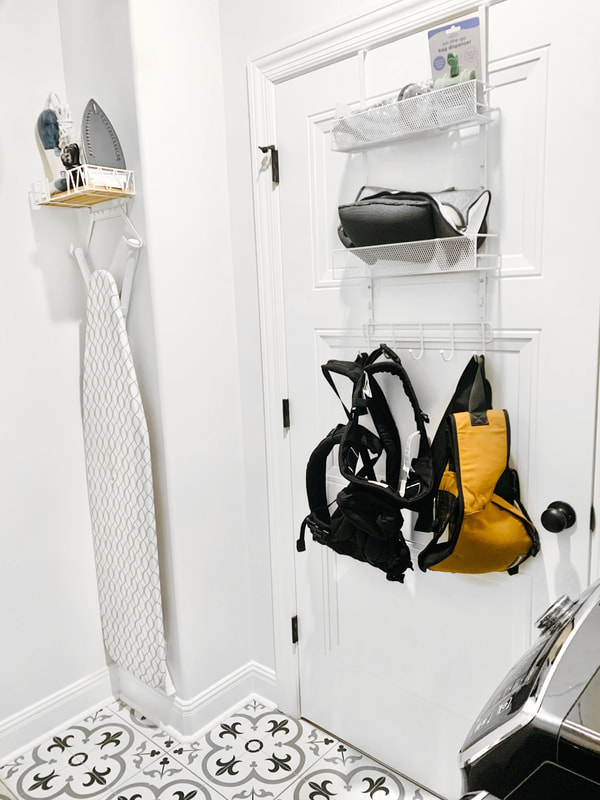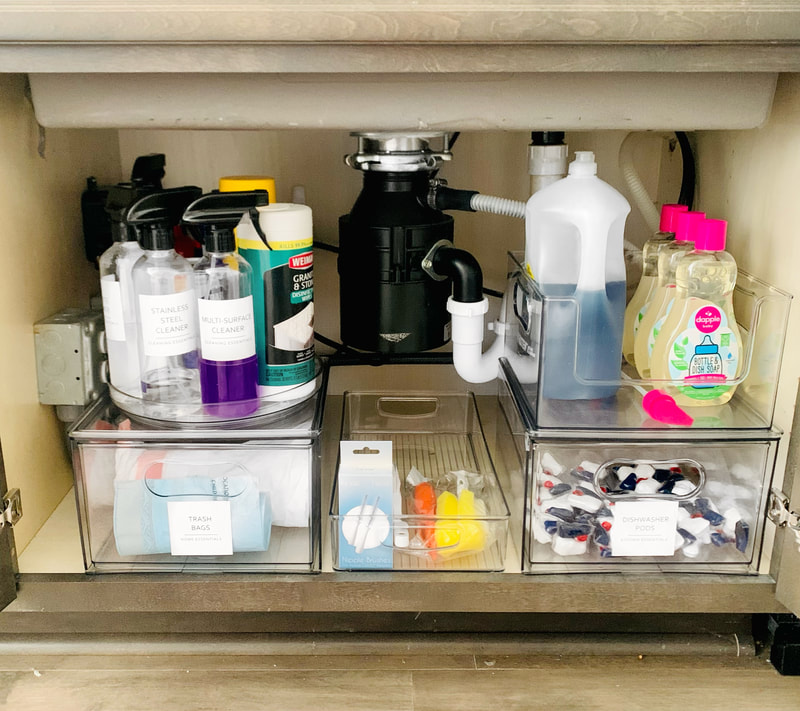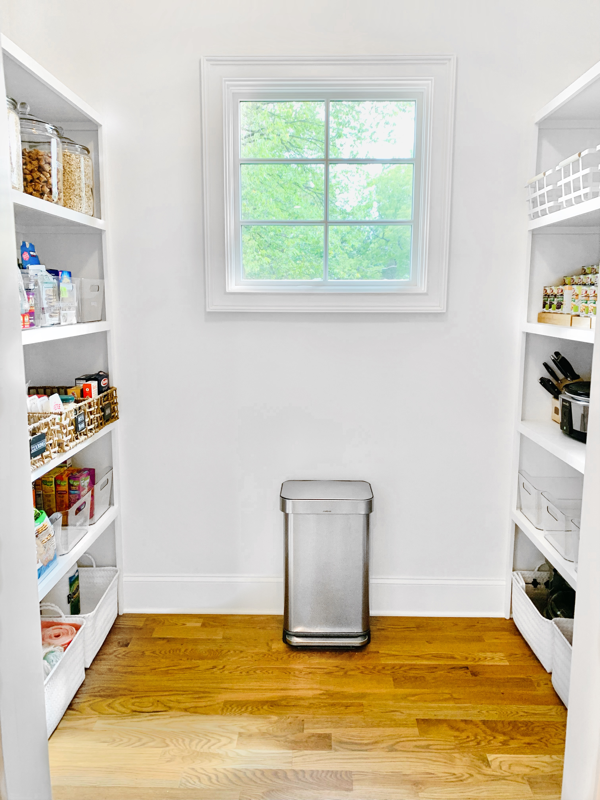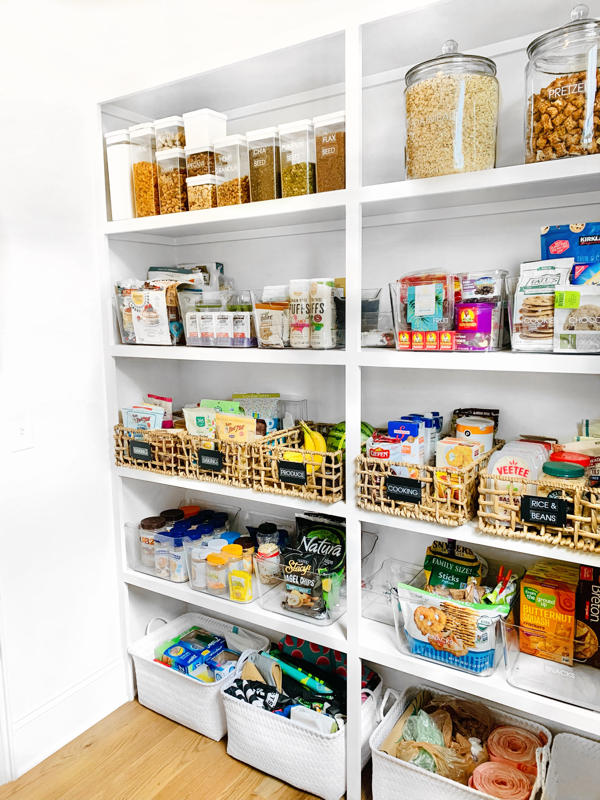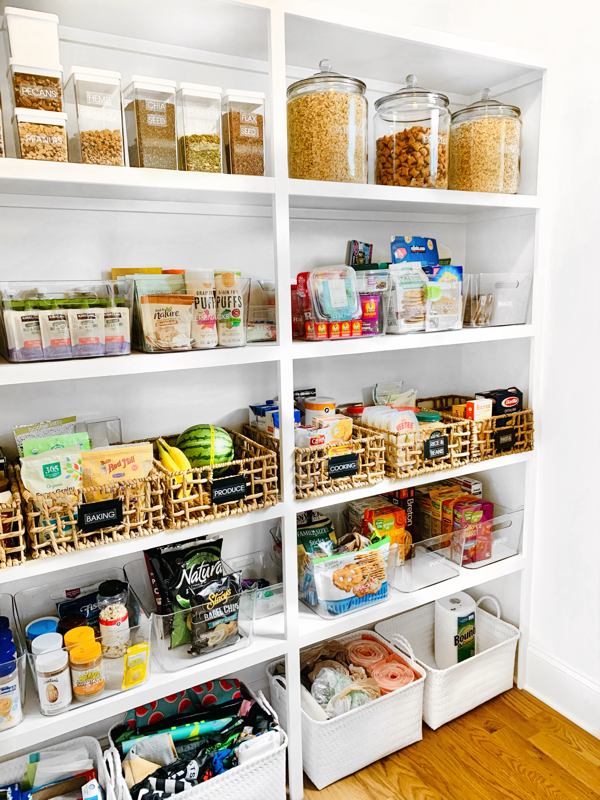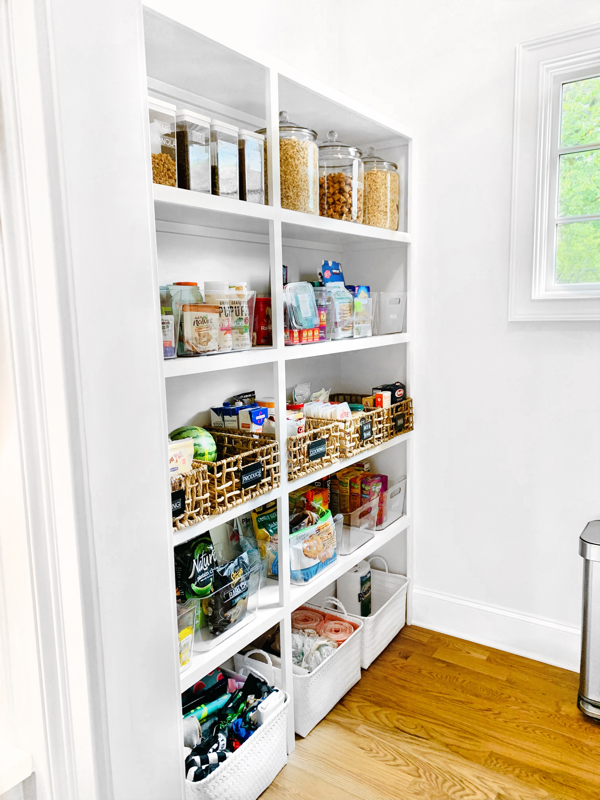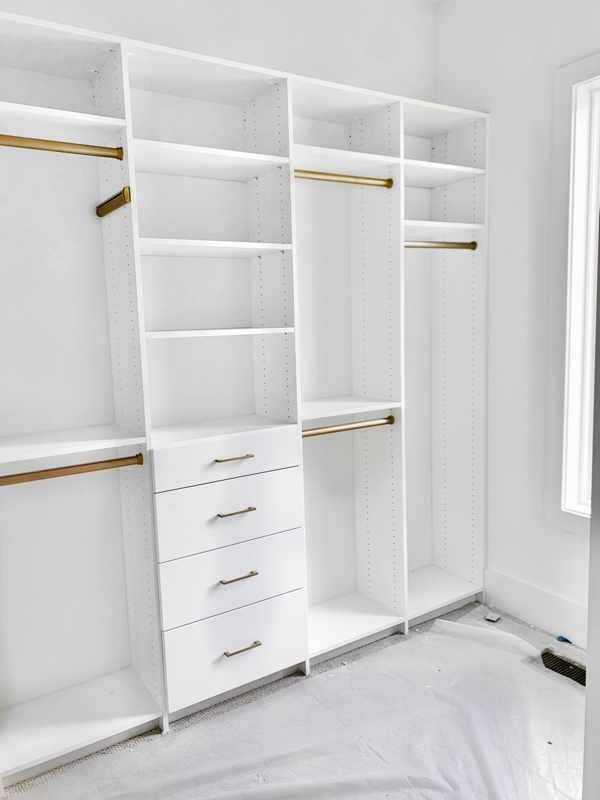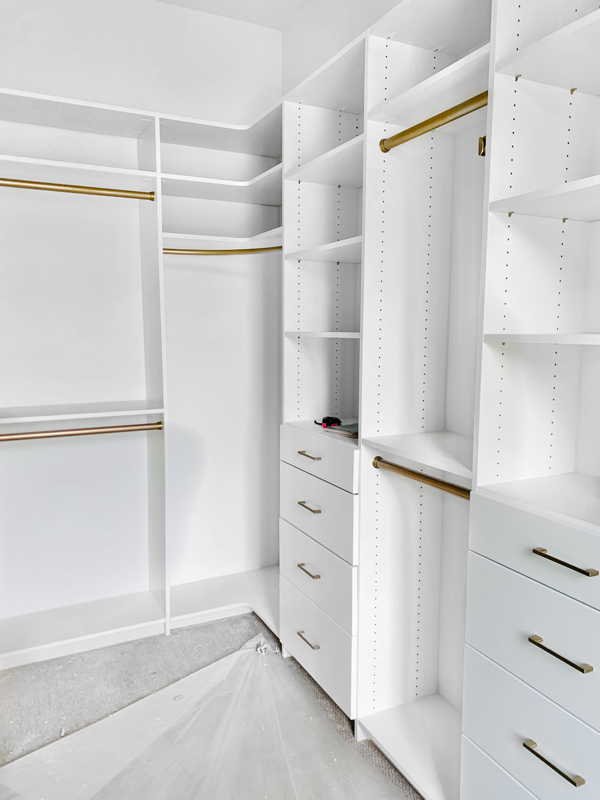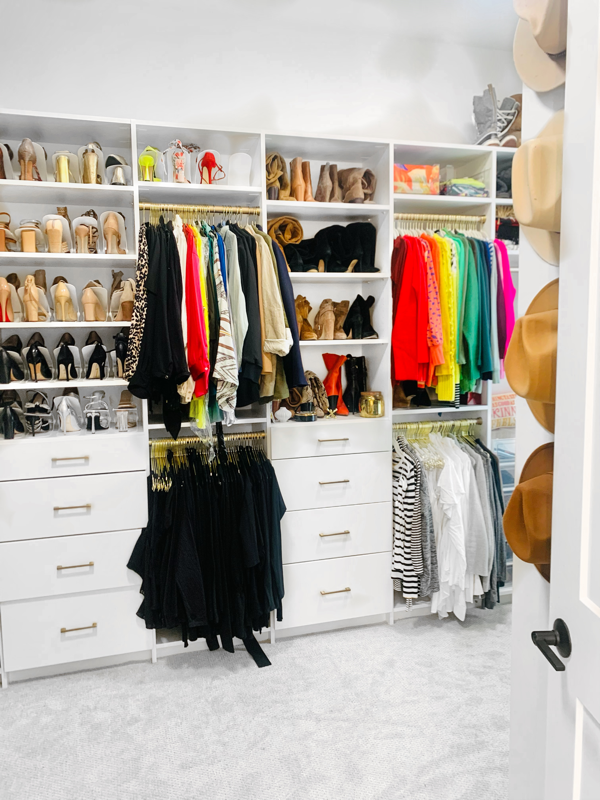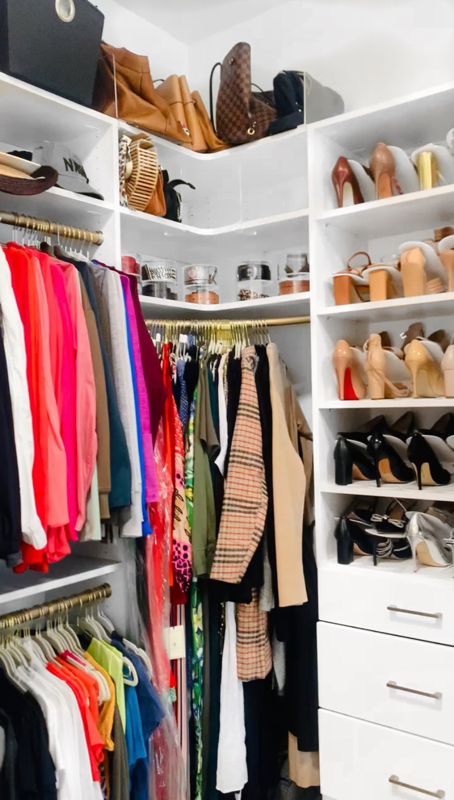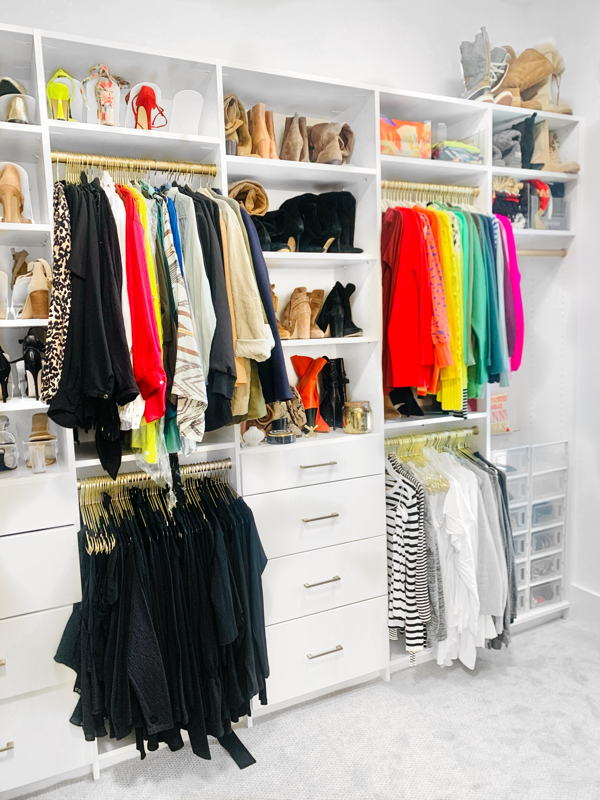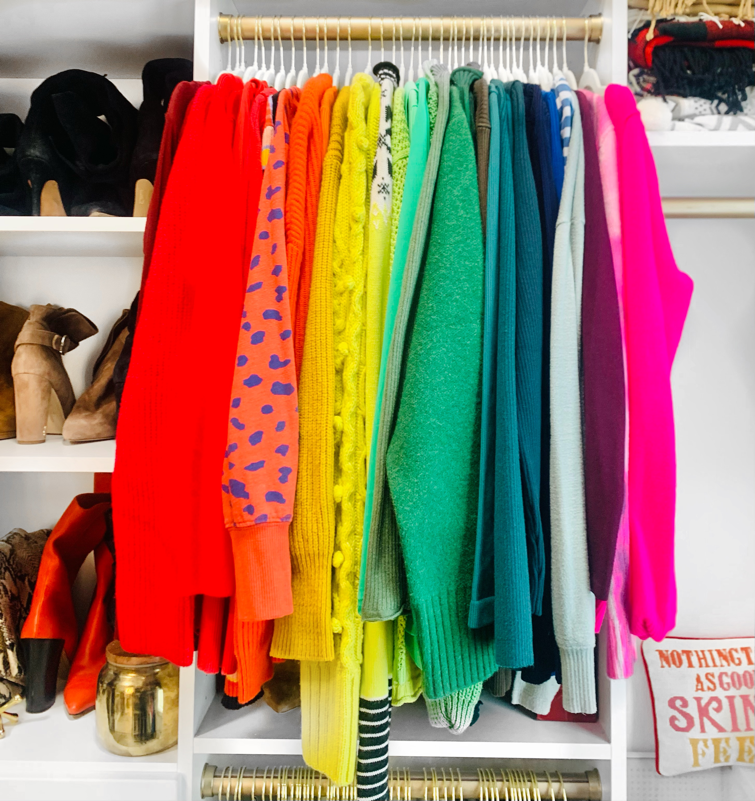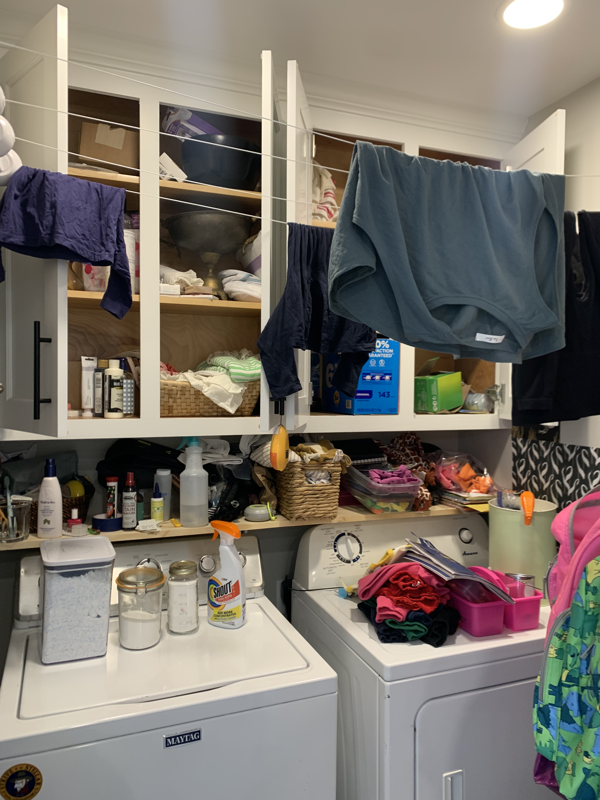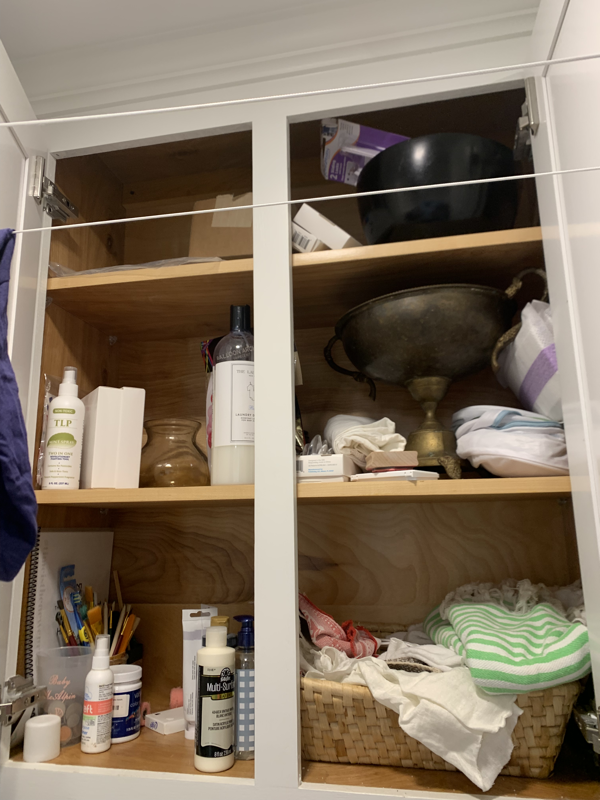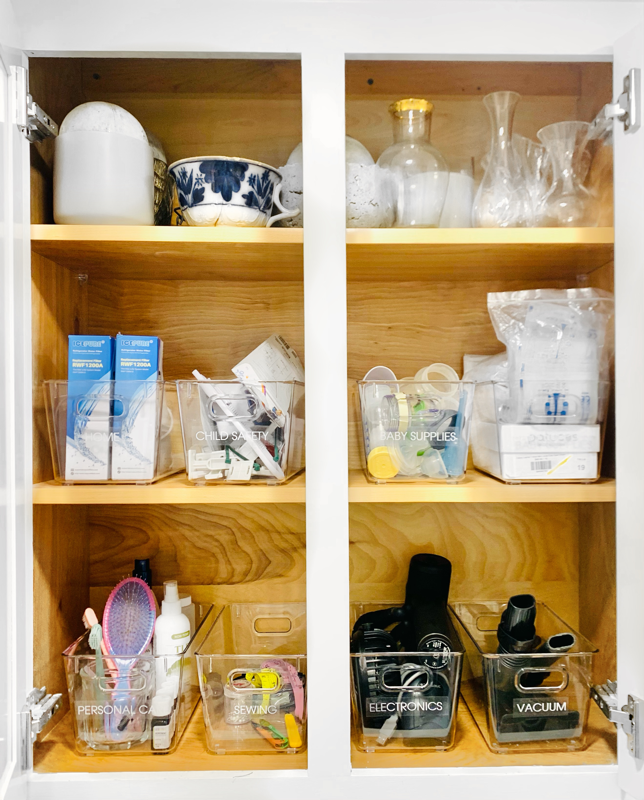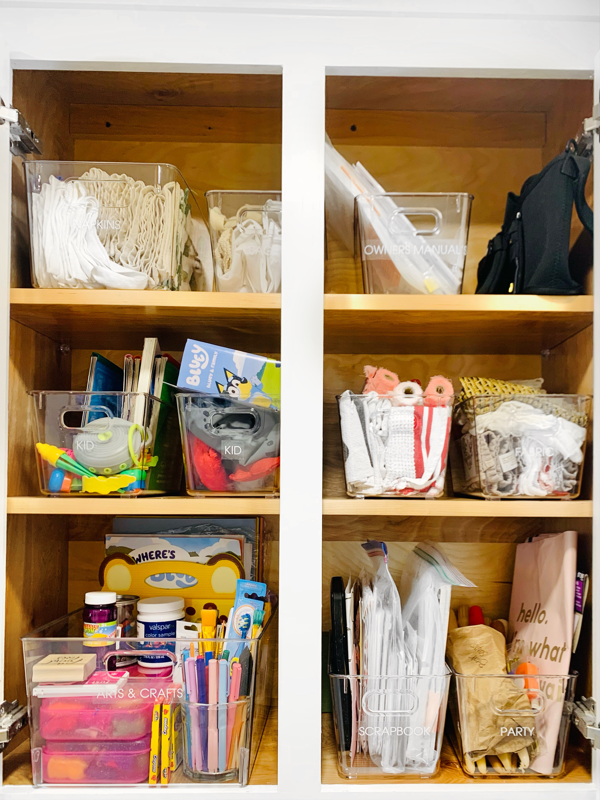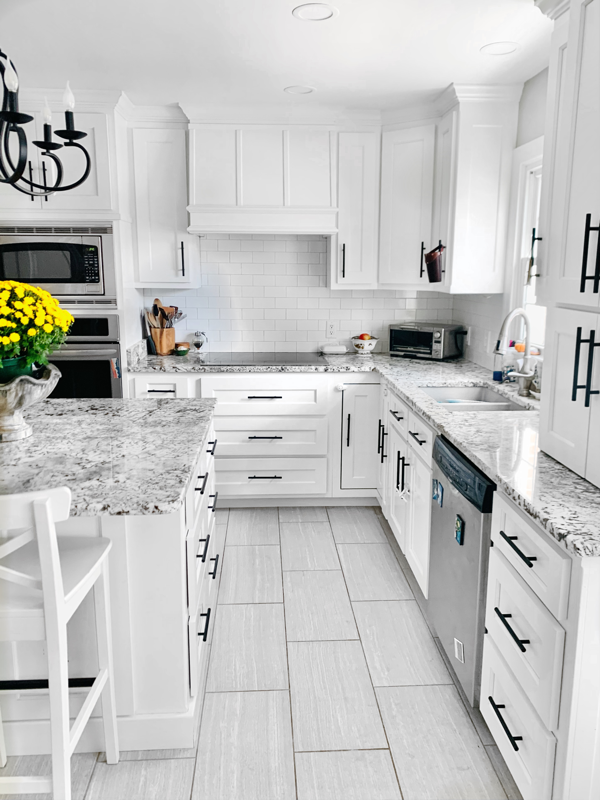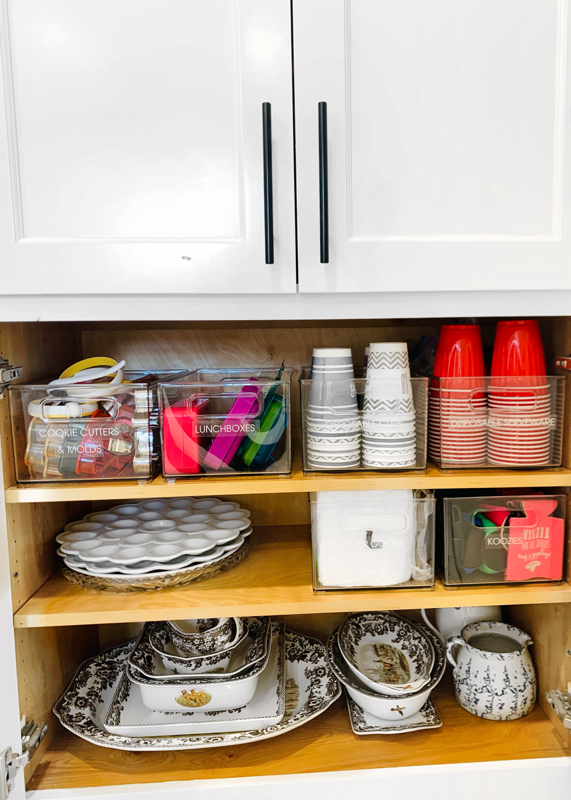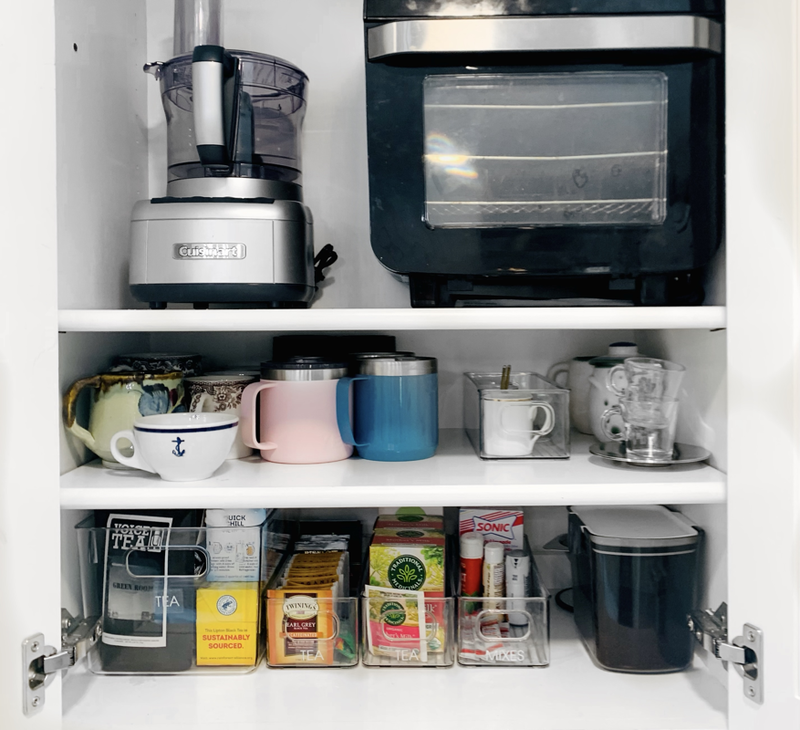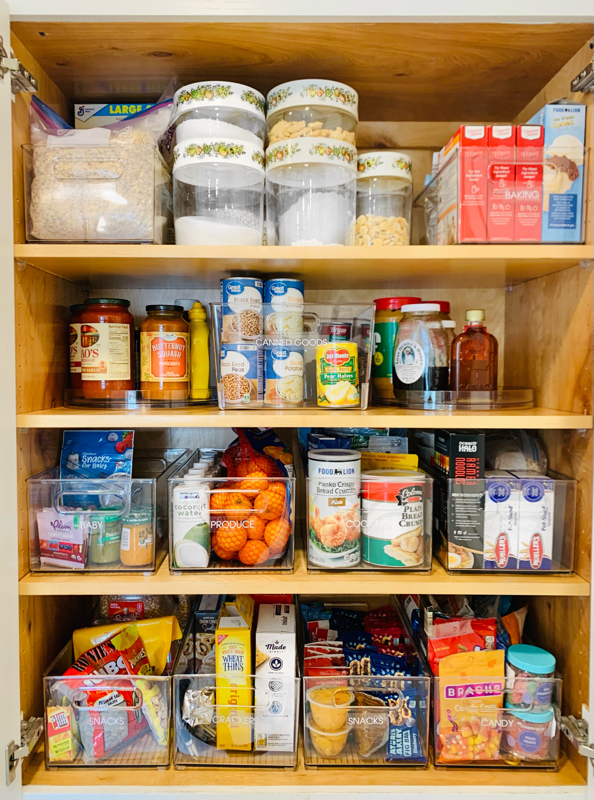|
As summer winds down and the back-to-school season approaches, it’s the perfect time to get organized and set up systems that will help your family stay on track throughout the school year. At Home Harmony Organizing, we understand that a smooth transition can make all the difference in creating a stress-free environment for both parents and kids. Here are some practical tips to help you get started:
1. Declutter and Simplify Start by decluttering your home, especially the areas that will be most impacted by the school routine, such as bedrooms, study areas, and entryways. Go through clothes, school supplies, and toys, and donate or discard items that are no longer needed. Simplifying your space can help create a more focused and calming environment. 2. Create a Command Center A command center is a centralized spot where you can keep track of important information and schedules. This can include: - A family calendar to note down school events, extracurricular activities, and appointments. - A bulletin board for important notices and reminders. - A dedicated spot for keys, backpacks, and school papers. Having everything in one place can help reduce last-minute scrambles and ensure everyone knows what’s happening each day. 3. Organize School Supplies Designate a specific area for school supplies. Use bins, baskets, or drawers to keep items like pens, pencils, notebooks, and art supplies neatly organized. Labeling containers can help kids easily find what they need and make it easier for them to put things back where they belong. 4. Plan Outfits Ahead of Time Streamline your mornings by planning outfits for the week. Use a hanging organizer in your child’s closet to set aside clothes for each day. This not only saves time but also helps avoid the daily outfit decision-making process, making mornings smoother. 5. Set Up a Homework Station Create a dedicated homework station that is free from distractions. Ensure it is well-stocked with necessary supplies and has good lighting. Having a consistent spot for homework can help kids focus better and develop a routine for studying. 6. Establish a Routine Establishing a routine can help everyone adjust to the new school schedule. Set consistent wake-up and bedtimes, and create a morning and evening routine that includes time for breakfast, packing lunches, and preparing for the next day. Consistency can make transitions easier and help everyone feel more organized. 7. Meal Prep and Plan Meal planning can save you time and reduce stress during busy school weeks. Prepare meals in advance and create a weekly meal plan. Involve your kids in packing their lunches and snacks to ensure they have healthy options they enjoy. 8. Organize the Entryway The entryway is the first and last stop of the day, so keeping it organized can make a big difference. Use hooks for backpacks and coats, and place a shoe rack or bin for shoes. Having a designated spot for everything can help prevent clutter and make mornings run more smoothly. 9. Involve Your Kids Involve your kids in the organizing process. Teaching them organizational skills and involving them in setting up systems can help them take ownership and responsibility for their belongings. Plus, it can make the process more fun and collaborative. 10. Maintain and Adjust Finally, remember that organizing is an ongoing process. Regularly assess and adjust your systems as needed. What works at the beginning of the school year might need tweaking as the year progresses. Stay flexible and open to changes that can help improve your family’s organization. By taking the time to get organized now, you can create a more harmonious and efficient home environment for the upcoming school year. At Home Harmony Organizing, we’re here to help you every step of the way. Contact us today for personalized organizing solutions tailored to your family’s needs. Let’s make this school year the best one yet! --- For more organizing tips and personalized assistance, reach out to Home Harmony Organizing. We’re here to help you create a home that works for you and your family.
0 Comments
In the journey towards achieving a harmonious home, one often overlooks the importance of an organized garage. A cluttered and chaotic garage not only hinders functionality but also disrupts the overall balance of your living space. As a professional home organizer, I recently had the pleasure of assisting a client in transforming her disheveled garage into a streamlined and efficient space. In this blog, we'll explore the step-by-step process we followed to bring order to the chaos and create a harmonious haven within the garage. Step 1: Assess and Plan The first crucial step in organizing any space is to assess the current situation and develop a strategic plan. With my client, we carefully evaluated the contents of the garage, identifying items that were essential and those that could be donated, sold, or discarded. This initial assessment set the foundation for a personalized organization plan tailored to the client's needs and preferences. Step 2: Categorize and Declutter Once we had a clear understanding of the garage's contents, we began the process of categorization. We grouped similar items together, creating designated zones for gardening tools, sports equipment, automotive supplies, and seasonal decorations. This step allowed us to identify duplicates and items that were no longer needed, streamlining the space and making room for what truly mattered. Step 3: Invest in Smart Storage Solutions To maximize the garage's storage potential, we invested in a variety of smart storage solutions. Wall-mounted shelves, gear tracks, and clear storage bins were strategically placed to create an organized and easily accessible system. Utilizing vertical space helped free up valuable floor space, making the garage feel more spacious and functional. Step 4: Create Zones for Specific Activities To enhance the functionality of the garage, we created dedicated zones for specific activities. A designated gardening area was established for our client's garden, while a separate zone housed sporting equipment and outdoor gear. By assigning specific areas for different activities, we not only optimized the space but also made it easier for the client to find and use items when needed. Step 5: Labeling and Maintenance To maintain the organized system over time, we incorporated a labeling system. Clear labels on storage bins and shelves ensured that everything had a designated place, making it easy for the client to locate items and maintain the order we had established. Regular maintenance schedules were also discussed to prevent future clutter and ensure the garage remained a harmonious space. Organizing a garage may seem like a daunting task, but with a strategic plan and the right mindset, it becomes a rewarding endeavor. The transformation of my client's garage not only provided her with a more functional and efficient space but also contributed to the overall harmony of her home. By following these steps and customizing the approach to your own needs, you too can turn your garage into a well-organized haven that enhances the overall harmony of your home. Welcome to our blog on our Nesting for Newborn package – your key to a stress-free start to parenthood through expert home organization. Whether you're a momma-to-be or a seasoned mom, our package is designed to bring harmony to your home. Discover the perfect blend of a thoughtful gift and practical organizing solutions tailored to your needs.
The Ultimate Baby Shower Gift and Push Present for Home Harmony Looking for a unique baby shower gift or push present that goes beyond the ordinary? Explore the Nesting for Newborn package – a thoughtful and practical choice for new parents. Elevate your gifting game with this exceptional home organizing solution. Tailored Home Organization for Every Parent Our Nesting for Newborn package is tailored to suit the unique needs of every parent. A pre-delivery consultation ensures a personalized approach, addressing your specific goals. From planning the space to handling the shopping, our team is dedicated to creating an organized haven for your growing family. Expert Home Organization for Comfort and Convenience Experience the transformation of key areas in your home with our expert home organization service. From dedicated nursing and diapering stations to a fully organized nursery, kitchen, and bathroom, we bring comfort and convenience to your daily routine. What's Included in Our Newsting for Newborn Package?
Say goodbye to stress and hello to a harmonious home with our Nesting for Newborn package – the perfect blend of thoughtful gifts and expert home organization. Let us take care of the details while you focus on what matters most – bonding with your new bundle of joy. Elevate your home organization journey with our tailored solutions and embrace the joy of parenthood in an organized haven. Gift certificates available! Text 615.854.9897 or email [email protected] to purchase. At Home Harmony Organizing, we believe that every room has the potential to be a harmonious haven, even those catch-all spaces that seem impossible to tame. Recently, we embarked on a transformative journey with a client, turning her cluttered catch-all room into a multifunctional oasis. Join us as we share the story of how this once chaotic space evolved into an organized haven for backstock storage, gift wrapping, crafts, sewing, & even Bogg bag inventory.
Assessment and Vision: The first step in tackling the catch-all room was to understand the client's vision for the space. We discussed her needs and aspirations, identifying key functions she desired — backstock storage, a gift wrapping + craft station, a sewing station, & even space for her Bogg bag inventory. Declutter and Donate: The catch-all room had become a dumping ground for miscellaneous items over the years. We began the transformation by decluttering the space and donating or discarding items that no longer served a purpose. This step not only cleared physical space but also created a mental space for the new, organized vision. Zoning and Layout Planning: With a clean slate, we strategically divided the room into zones for each intended function. By creating designated areas for backstock storage, gift wrapping, crafts, sewing, & Bogg bag inventory, we established a logical layout that maximized the room's potential. Backstock Storage Solutions: Items were categorized and placed on shelves in a way that allowed for easy accessibility. Now, the client can effortlessly locate extra supplies and backstock items without rummaging through a disorganized mess. Gift Wrapping Wonderland: We designed a dedicated gift wrapping station equipped with a sturdy table, wrapping paper holders, ribbon organizers, and clear labeled bins for tape, scissors, and gift tags. This designated space ensures that the client can wrap presents with ease, saving time and reducing stress during special occasions. Craft & Sewing Corner: The catch-all room was also transformed into a craft & sewing corner with labeled bins for art / sewing supplies, small tools, a sewing machine, & a spacious work surface. The client now has a designated space to unleash her creativity without the frustration of searching for materials. Bogg Bag Inventory Management: For our client who manages an inventory of Bogg bags, we created a system to keep track of colors, sizes, and quantities. Clear bins with labels were used to store and organize the bags, making it simple for the client to assess inventory levels at a glance. The transformation of this catch-all room is a testament to the power of intentional organization and the impact it can have on daily life. At Home Harmony Organizing, we believe that every room should serve a purpose and bring joy to its occupants. The multifunctional oasis we created not only meets the client's practical needs, but also provides a space where she can indulge in her hobbies and passions with ease. From chaos to craft haven, this room now stands as a shining example of the transformative magic that happens when order and intentionality come together. At Home Harmony Organizing, we believe that a well-organized home is the key to a stress-free and harmonious life. Recently, we had the pleasure of working with a client to revamp under her kitchen sink, her laundry room, and her cleaning closet. Join us as we share the journey of transforming these essential spaces into functional and aesthetically pleasing areas that our client can now enjoy. Here's a glimpse into the process of turning chaos into calm.
Assessment and Goal Setting: Our journey began with a thorough assessment of the client's needs, preferences, and pain points under her kitchen, her laundry room, and her cleaning closet. We collaborated with the client to establish clear goals, ensuring that our organization solutions aligned seamlessly with her lifestyle. Kitchen Sink Sanity: We started by decluttering under the sink & creating dedicated spaces for frequently used items. Utilizing under-sink organizers, we optimized storage for cleaning supplies, dish soap, and garbage bags. Having a designated area for everything makes daily kitchen tasks a breeze! Laundry Room Liberation: In the laundry room, we focused on maximizing functionality while maintaining a serene atmosphere. We installed new bins for storing laundry essentials, creating a designated space for detergent, fabric softener, and cleaning supplies. We mounted her ironing board on the wall for easy access. Now it's no longer in the way! We also created a designated area behind the door for shoes, winter gear, & baby travel items. With a well-organized laundry room, our client now has more time to focus on what matters, rather than searching for misplaced items. Cleaning Closet Revamp: The cleaning closet underwent a complete transformation, transitioning from a chaotic collection of supplies to a tidy and accessible space. We implemented shelving and labeled bins to categorize cleaning products, ensuring that everything has its place. By creating a system that our client could easily maintain, we empowered her to keep the cleaning closet organized for the long haul. Personalized Maintenance Plan: As the final step in our journey, we worked collaboratively with the client to develop a personalized maintenance plan. This plan includes simple daily habits and routines to keep the organized spaces intact. By incorporating these practices into her daily life, our client can enjoy the benefits of a clutter-free and harmonious home. The transformation of our client's kitchen sink, laundry room, and cleaning closet exemplifies the impact that intentional organization can have on one's daily life. At Home Harmony Organizing, our mission is to create spaces that not only look aesthetically pleasing, but also function seamlessly with the rhythm of our clients' lives. The satisfaction of seeing our client's joy and relief as she navigates her newly organized spaces is a testament to the power of order and harmony in the home. The holiday season is a time for joy, celebration, and creating cherished memories with loved ones. However, the process of decorating for the holidays can quickly turn into a stressful experience if your seasonal decor is not organized. Home Harmony Organizing is here to help you transform your seasonal decor closet into a well-ordered space, ensuring that decking the halls becomes a delightful and stress-free affair. Let's dive into some practical tips to bring harmony to your holiday decorations.
Assessment and Decluttering: The first step in achieving a harmonious seasonal decor closet is to assess your current inventory. Take everything out of the closet and categorize items by holiday or season. As you go through your decorations, consider donating or discarding items that no longer align with your festive vision. This process not only streamlines your collection but also opens up space for new and meaningful additions. Invest in Storage Solutions: Make the most of your seasonal decor closet by investing in smart storage solutions. Consider transparent containers for easy identification of contents and label each box with the specific holiday or theme. Drawer dividers, shelf organizers, and hanging hooks can help maximize vertical space and keep your decorations easily accessible. Categorization and Binning: Organize your decorations into categories such as ornaments, lights, figurines, and linens. Place items of the same category in designated bins or boxes. This not only simplifies the retrieval process but also ensures that fragile items are protected during storage. When it's time to decorate, you'll know exactly where to find what you need. Create a Designated Space for Wrapping Supplies: If your holiday decorations include gift wrapping materials, allocate a specific area within the closet for these items. Store wrapping paper, ribbons, and gift bags in an easily accessible location to streamline the gift-wrapping process. A designated space will save you time and effort when it comes to wrapping presents for loved ones. Rotate and Refresh: Consider rotating your holiday decorations to keep things fresh and exciting each year. Store the current season's decorations towards the front of the closet for easy access. As the holidays pass, move these items to the back and bring the next season's decor forward. This approach not only helps maintain novelty but also prevents your closet from becoming cluttered. Maintain a Master Inventory List: Keep track of your seasonal decor with a master inventory list. Note the contents of each box, including any specific details about the decorations. This list will serve as a quick reference guide, ensuring that you can locate items efficiently and avoid unnecessary searching. Transforming your seasonal decor closet into an organized and efficient space is a gift that keeps on giving. By following these tips from Home Harmony Organizing, you can create a stress-free and enjoyable experience when decorating for the holidays. With a well-organized closet, you'll have more time to savor the festive season with family and friends, surrounded by the warmth and joy of your beautifully adorned home. At Home Harmony Organizing, we recently embarked on a thrilling pantry rescue mission, turning chaos into pantry perfection! Our goal was to transform a cluttered space with lost items and no designated spots into a haven of organization and efficiency.
Clear Bins for Clarity: The cornerstone of our pantry makeover involved the strategic use of clear bins. These transparent wonders not only maximized available space but also enhanced visibility. With a quick glance, homeowners can now effortlessly locate their essentials, bringing order to the once-disarrayed shelves. Can Shelf Innovation: To unlock the full potential of the top shelf, we introduced a can shelf, elevating the pantry game. This addition not only optimizes vertical space but also adds a touch of sophistication to the overall aesthetic. Now, canned goods find their designated spots with ease, creating a harmonious balance between functionality and style. Turntables for Accessibility: Condiments, sauces, and oils often pose a challenge in pantries. We addressed this by incorporating a 16-inch turntable, making these small but essential items easily accessible. No more fumbling through rows of bottles – a simple spin brings everything into view. It's the little details that make a big difference in creating a well-organized space. At Home Harmony Organizing, we thrive on turning home organization challenges into triumphs. The recent pantry project stands as a testament to our commitment to transforming chaos into calm. With clear bins, can shelves, and turntables, we've not only maximized space but also created a visually appealing and highly functional pantry. Let us be the architects of your home's harmony – where every item has its rightful home, and chaos is a thing of the past. Moving to a new home is an exciting, albeit daunting experience. Our recent client, Nikki, found herself in this exact situation, overwhelmed with the chaos of moving and figuring out how to set up her brand-new closet. At Home Harmony Organizing, we specialize in turning new spaces into functional and beautiful havens. In this blog, we'll share Nikki's journey and reveal how we helped her conquer the stress through expert closet organization. Get ready to dive into the world of organized bliss!
The New Beginning: Nikki's new home offered her a fresh start, but the closet in her master bedroom was a blank canvas with great potential. However, it also presented her with a perplexing dilemma – where to start? Amidst the sea of boxes and disorganized clothes, she sought our assistance to bring order and beauty to her closet. Assessment and Personalization: Our first step was to conduct a thorough assessment of the closet's layout and Nikki's specific needs. We listened to her preferences and lifestyle, taking into account her clothing collection and accessories. This is where true closet organization begins – by understanding the unique requirements of the individual. Functional and Aesthetic Solutions: We knew that to truly relieve Nikki's stress and make her closet shine, we had to incorporate both functionality and aesthetics. Here's what we did: 1: Layout: We came up with a game plan for the closet by choosing which sections of the built-in shelving made the most sense for clothing, shoes, handbags, long dresses, and more. This not only made sure we were maximizing storage, but also made sure that everything was easy to find. 2. Hangers and Dividers: The right hangers and dividers can make a huge difference. We provided Nikki with quality hangers that matched her closet's aesthetics, ensuring her clothes hung beautifully. 3. Accessory Stations: Jewelry, scarves, and belts can often become disorganized. We created specific stations for each of these, using shelf dividers, stackable organizers, clear bins, and elegant trays. Nikki’s closet transformation was a journey that relieved her moving stress and gave her a newfound sense of home. Closet organization isn't just about tidiness; it's about creating a personalized space that showcases your style and simplifies your daily routine. Home Harmony Organizing can make this happen for you as well. If you're ready to set up your new closet in the most functional and beautiful way possible, contact us today. We're your partner in creating organized and aesthetically pleasing spaces that truly reflect you. Welcome home! At Home Harmony Organizing, we understand that every home has its unique challenges, and we thrive on transforming cluttered spaces into functional, well-organized havens. In this blog, we'll take you through a recent project where we worked our magic in a client's laundry room, turning it from a chaotic catch-all space into a model of laundry room organization.
The Laundry Room Dilemma: Our client reached out to us with a laundry room that had lost its intended purpose. It had become a chaotic storage area where everything that didn't fit anywhere else ended up. She couldn't find anything, and the disarray made laundry day a dreaded task. The laundry room had become a true "catch-all" for clutter. Assessment and Customized Solution: The first step in our laundry room organization journey was to assess the space and understand her specific needs. We took precise measurements, noting every nook and cranny to optimize the available space fully. This information is crucial when creating a tailored solution for any area. To restore order and functionality to her laundry room, we devised a customized solution that incorporated several key elements: 1. Optimizing Shelving Systems: To maximize vertical space, we located clear bins that fit perfectly on the already installed sturdy wall-mounted shelves, which were essential for storing laundry detergents, cleaning supplies, and even some of the overflow from other parts of the house. 2. Bins: We selected smaller clear bins to corral smaller items inside the cabinets. These containers kept these items neatly organized and easy to find. 3. Laundry Sorting Station: Our client needed an efficient way to sort and store dirty laundry. We installed a rolling laundry cart with labeled compartments for whites, darks, and delicates, making it easier for her to keep up with her laundry routine. 4. Ironing Station: Recognizing that Sarah frequently ironed clothes in the laundry room, we added an ironing board with wall-mounted hooks for storing the iron and ironing supplies. In just a couple or hours, we transformed her laundry room from a cluttered nightmare into an organized and functional space. Our tailored solution with product recommendations and precise measurements made all the difference. With our assistance, she now enjoys a laundry room that not only serves its primary purpose but also provides storage and organization for various household items. Home Harmony Organizing can do the same for you, turning your laundry room into a well-organized, stress-free oasis. If you're ready to conquer your laundry room clutter, contact us today for a personalized consultation. Laundry room organization is our specialty, and we're here to help you achieve it! In the world of home organization, every project is unique, but they all share a common goal: to restore order and function to our clients' living spaces. Today, we're excited to share a success story from one of our recent clients who faced the challenge of an unorganized kitchen. This client moved into her home two years ago, but her kitchen lacked any functional systems. She reached out to Home Harmony Organizing to help her create a beautifully organized and efficient kitchen. In this post, we'll delve into the details of this project and showcase the transformation that Home Harmony Organizing brought to her home.
Assessment and Planning: Upon our initial consultation with the client, we recognized that her kitchen needed a complete overhaul. The absence of any organization systems had led to cluttered countertops, misplaced utensils, and a general sense of chaos. Our team knew that we had a significant task at hand, but we were determined to restore order. Customized Solutions: We believe in tailoring our services to meet the unique needs of each client. For this particular kitchen, we designed custom organization solutions. This included installing pull-out shelves, drawer organizers, labels, and more all to optimize and maximize storage and functionality. We also integrated stylish clear storage containers to keep her pantry looking beautiful while staying organized. Decluttering and Sorting: Our first step was decluttering. We assisted the client in sorting through her kitchen items, helping her decide what to keep, donate, or discard. This process not only created more space but also ensured that only the essential items remained in the kitchen. Space Utilization: With the clutter removed, we made the most of the available space. Every inch of the kitchen was utilized efficiently. We utilized deep drawer space for pots and pans, implemented a dedicated spice cabinet, and added pull-out drawers to make baking sheets, cutting boards, and under sink items easily accessible. Functionality Meets Aesthetics: At Home Harmony Organizing, we believe that a well-organized space should also be visually appealing. In this kitchen, we combined functionality with aesthetics. We used a neat and tidy clear color scheme and storage solutions that matched the client's style and taste. Ongoing Maintenance: Our commitment to clients doesn't end with the completion of the project. We provided our client with practical tips and strategies to maintain the organization in her kitchen. We also scheduled future follow-up appointments to ensure everything continues to run smoothly. Home Harmony Organizing is proud to have helped our client transform her kitchen into a harmonious and functional space. By implementing customized organization solutions and decluttering strategies, we've shown that it's never too late to bring order to your home. If you're facing a similar challenge, don't hesitate to reach out to us for all your home organization needs. Let us help you create the organized and efficient space you've always dreamed of. |
Services |
H.H.O. |
CONTACT US
|




